The 9 essential Berlin travel tips for budget trips
Germany’s capital city is an essential stop for any traveller wanting to experience the bustling streets and I’ve got the perfect Berlin travel tips for you to enjoy the city like a Berliner on a budget.
With hints to help you get the most out of your stay, like whether the Berlin Welcome Card is worth purchasing and how you can visit many of the city’s top sights for free.
As well as handy pointers on which districts will save your wallet and get you a real taste of the city beyond sleek Potsdamer Platz.
Grab your leather jacket and your camera, I’ve got the budget guide to the gritty streets of Berlin just for you.
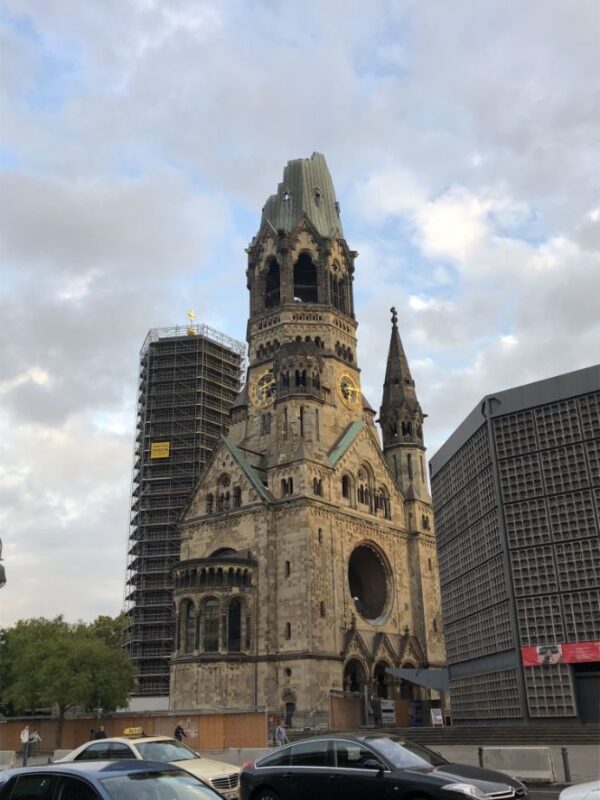
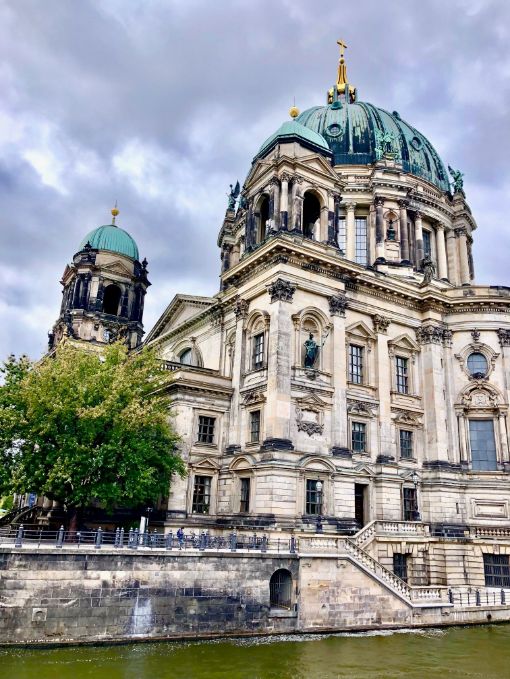
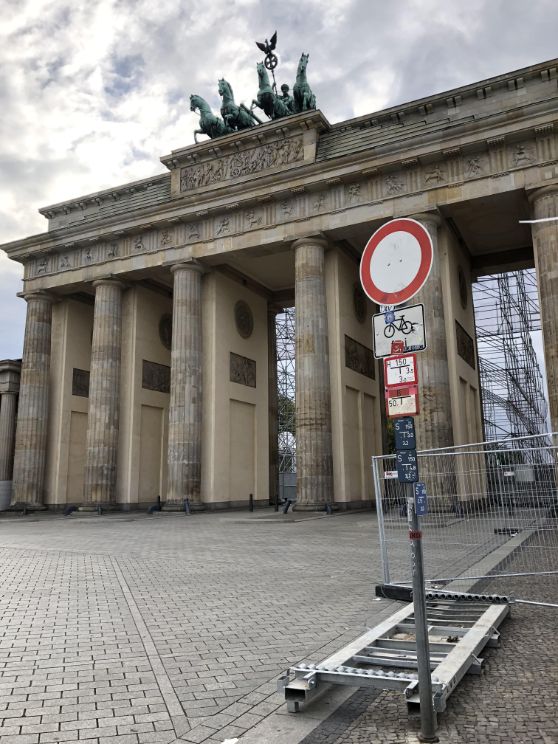
No 1. Is the Berlin Welcome Card worth it for you? How to work that out
Berlin has its own visitor card designed to give travellers better value for money when they’re visiting the tourist attractions of Germany’s capital – the Berlin Welcome Card.
But since there are costs associated with buying the card itself, we’ve gotta do a tiny bit of maths to work out if it will be worth it for your trip.
The base level card costs 25€ and covers unlimited public transportation for 1 adult in zones A/B of the Berlin network for 48 hours, it will cost an extra 5€ for coverage out to the Brandenburg airport, Sanssouci Palace and Potsdam, which all lie in zone C.
The base level includes some discounts on attractions like the TV Tower viewing platform at around 25% off. But to be honest, unless you’re planning on using public transport a lot and visiting many different paid attractions, it may work out cheaper to buy public transportation tickets as you need them.
A 24 hour ticket costs 8.80€ per adult and allows you unlimited travel in zones A/B, costing 10€ if you need all three zones.
If you were in Berlin for two days and needed unlimited travel both days, the tickets would cost 20€, saving you 5€.
You can easily do the math yourself by checking out this price list for the Welcome Card and work out if you will be saving some Euros or not, prices for different attractions are easily found online.
Read on for some of Berlin’s main attractions that are totally free to visit!
How about a 3-day Berlin itinerary packed with sights for you to enjoy?
No. 2 Don’t miss seeing Cold War history come to life before your eyes, Berlin was once a city divided
Germany’s capital has had a very tumultuous run over the past century and that’s exactly why when you’re here, you won’t notice anywhere near as many of the old-world buildings as you do in other European capitals.
Heavily bombed in World War II (to the brink of devastation) and then split in four different sections, the city was only rebuilt in small portions.
And only some of the beautiful cathedrals and other historic buildings were restored, giving Berlin the modern metropolis feel rather than what you might have come to expect when you’ve visited other German cities.
With the exception of Frankfurt maybe, also heavily damaged in WWII.
Berlin was divided immediately post the Second World War into four sectors, three of which eventually combined to become West Berlin and one which became East Berlin.
Initially, people could move freely between the two sides of Berlin, with the Soviet controlled East Berlin coming under far stricter limitations.
This led to East Berliners increasingly fleeing over to the West where they could enjoy greater personal freedom.
To combat this, the East German government initated the beginnings of the infamous Berlin Wall and had to resort to fortifications and armed guards with instructions to shoot those attempting to escape to the West.
The Berlin Wall divided the city for over 20 years and families were quite literally torn apart, separated from each other for decades while the Cold War simmered.
Checkpoint Charlie was the main point where visitors could cross from West Berlin to East Berlin after being scrutinised and there’s still a little hut reconstructed in roughly the same spot that you can visit.
Amidst massive protests in 1989, the fall of the Berlin Wall began the process that finally reunited Germany as a nation, today celebrated as a national holiday – Tag der Deutschen Einheit or German Unity Day.
There are quite a few different spots where you can see the remnants of the Berlin Wall scattered around the city, as well as multiple museums commemorating the legacy of both former East Germany and the Wall.
My favourites are the sombre Berlin Wall Memorial and the much more light-hearted DDR Museum opposite the Berlin Cathedral or Berliner Dom.
The Berlin Wall Memorial has both indoor and outdoor exhibitions to display the long shadow that the wall held over the city and its residents, with harrowing details of the human costs of the wall and the East German regime.
The DDR Museum displays the most everyday aspects of life for East Berlin residents from schooling through to common household furnishings and even a Trabant car for you to check out.
Head over to the East Side Gallery (the longest open air gallery in the world) to take the impressive murals that were painted here by artists from the world over to pay homage to the lives lost during the period that the wall stood and unite against division.
Over in Friedrichshain’s Karl-Marx-Allee, the promenade is lined with various Stalinist architectural monsters which were formerly DDR offices for officials of the East German regime. A great way to take a fascinating peek into Berlin’s past from the very different city we see today.
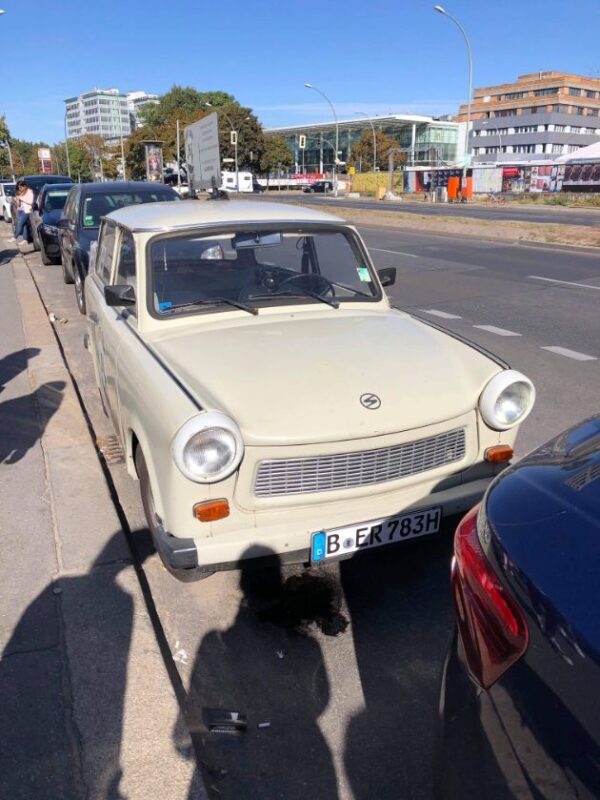
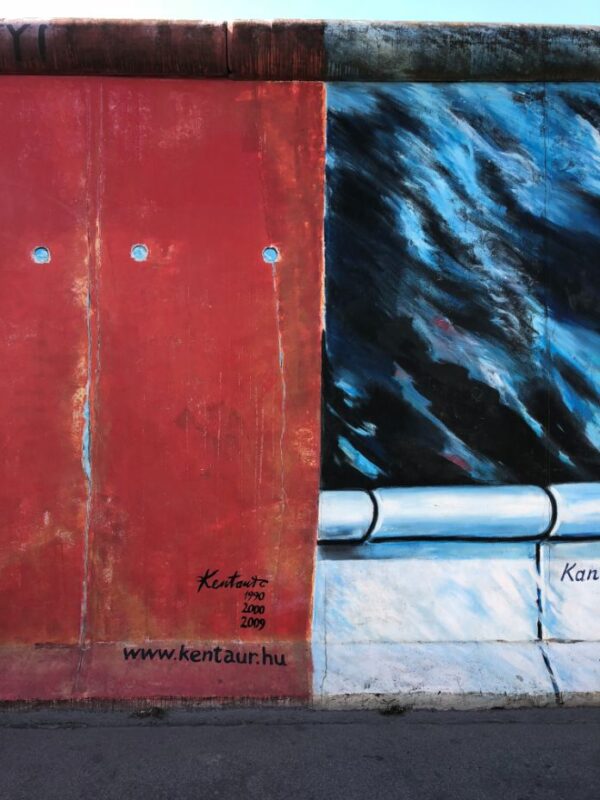
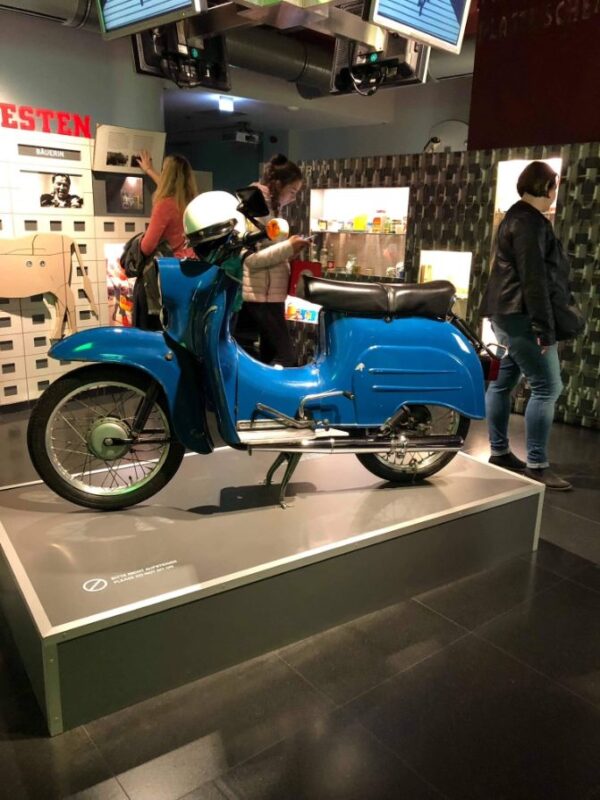
No. 3 Grab an e sim so you can hit the ground running with internet access without needing to worry about losing your sim card
The German capital is quite a spread out city, while many of the main attractions are located in the city center, you’ll be travelling further afield if you’d like to check out all of the sights.
And if you’re not planning to download offline maps for your visit, it could be costly to use roaming data while you’re in Germany.
Double check how much your roaming charges will cost you and compare if it might be more economical to purchase a SIM package over there.
This is why I love to swap out my regular SIM for one that will give me cheap data abroad, compared to paying extra for roaming from Australia.
You can easily pick up a cheap prepaid sim card from any tobacconists or corner store within Berlin or by stopping into the relevant network store.
Some of the main service providers are Telekom and Lebara, consider whether you’ll need your SIM card to work in other countries before you purchase one.
Alternatively, if you’re like me and really bad at keeping track of different SIM cards, you could opt for an e-SIM where you purchase it online, preload it onto your phone and then activate it while you’re in the country.
There are plenty of different providers operating in Europe, a quick search will bring up plenty of options which can be purchased online and customer service can be easily reached if you have any problems, which probably won’t be an option if you’re popping into a corner store to buy one on your first day.
Note: Wi-Fi is fairly widely available in Germany in restaurants and cafés so you might be able to get away with downloading offline maps and saving the money you’d spend on a sim (look for WLAN, the German word for Wi-Fi).
Looking for more info on the best Berlin party hostels to stay at for clubbing on a budget?
No. 4 Take advantage of Berlin’s attractions offering free admission
Berlin can definitely be a budget friendly city if you know which spots to visit, aka those that are free to enter! And Berlin has plenty on offer.
Spots like the Brandenburg Gate, Reichstag Building (where the German Parliament sits) and the East Side Gallery are totally free to visit – though don’t forget to book in your time slot online for the Reichstag before you go!
The glass dome and rooftop terrace are super cool to experience and you’ll be enjoying a world class view over the center of Berlin without paying a cent. Though I’d recommend not eating at the rooftop terrace restaurant of the Reichstag if you’ve got a budget for this trip.
Other free spots to see include
Topography of Terror – museum documenting Nazi atrocities during their period of existence
Berlin Wall Memorial (Gedenkstätte Berliner Mauer) – memorial and moving documentation centre focussed on the human cost of the Berlin Wall
Tempelhofer Feld – formerly Tempelhof Airport, now converted into a massive city park
Memorial to the Murdered Jews of Europe and its corresponding museum – Holocaust Memorial standing in solemn remembrance
No. 5 Don’t stay in the city center aka Berlin Mitte
While Mitte is home to many of Berlin’s most famous sites, I would recommend to base yourself outside of the city centre if you’re working on a limited budget.
There are far more reasonably priced accommodation options, menus will be a bit cheaper and you’ll also get a better insight into the neighbourhood hubs that Berliners are lucky enough to call home.
Strolling around elegant Prenzlauer Berg with fresh pastries in hand offers less grit than stepping out into Berlin’s inner city.
Plus, with Berlin’s excellent public transportation, you’ll only be a stop or two away from the main sights anyway.
My recommendations for suburbs to base yourself in are the trendy Prenzlauer Berg with its beautiful pastel houses or eclectic Friedrichshain, home to plenty of flea markets and nightclubs galore.
With a gentle sprinkle of international eateries and New Wave cafes serving up world class coffee. Plus, these two spots also have a higher concentration of locals living here compared to the inner city so you’ll get more of a feel for life as a Berliner!
In Prenzlauer Berg, you’re only a short stroll from the Mauerpark. Don’t miss karaoke here on Sundays, which follows the flea market, touting oodles of vintage wares from clothes to records and more.
Grab a bite to eat from one of the food stands or a coffee from the nearest trendy café and perch up to take in the show.
On your way there, you might pass Konnopke’s Imbiss serving up some of Berlin’s most famous culinary delicacy, the humble currywurst.
A grilled pork bratwurst sliced up, doused in lightly spiced sauce alongside hot potato chips, you’re practically a Berliner already.
Over in former East Berlin, Friedrichshain and its famous Boxhagener Platz have more of a gritty feel with plenty of street art, political protest signs and nightclubs galore.
If you’re planning on taking in some of Berlin’s famous nightclub scene, F-hain is home to its fair share of high profile clubs, including Berghain.
The multi-cultural food offerings and trendy cafes don’t hurt either, Shakespeare & Sons serves up delicious bagels inside an English language bookstore.
Or the hip Silo Coffee has all the brunch classics you’d expect in an upmarket café with perfected coffee.
Stop by the RAW Gelände for the vintage markets on the weekend and pop into the Schalander Biergarten if the sun is shining for a brew or two, straight from the brewery!
What about Berlin after dark? I’ve got the best guide on what to do in Berlin at night right here!
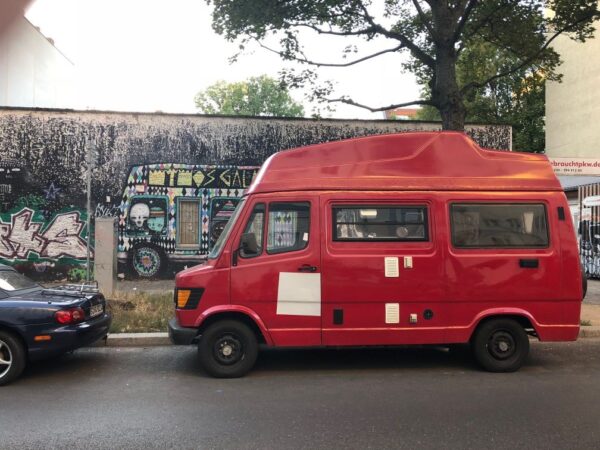

No. 6 Don’t forget to get some cash out!
Despite recent moves to card only for payments across different cities, Germany has been a little bit behind the times on adjusting to tap and go payments.
You’ll find plenty of spots across the city that of course accept card, but in Germany, cash is still king.
Bring some along for the inevitable little purchases like street food or the door charge on the nightclubs, no one wants to be trudging off to find an ATM while all their friends head inside the club.
Some bars and restaurants are still cash only so this is a country where it’s better to have some Euros in your wallet, rather than relying on your card.
Credit cards are absolutely accepted at hotels and most restaurants, some may charge an additional surcharge.
This is more like some cash for random expenses so don’t worry about getting out a few hundred Euro, you can always go back and get more out if you need it.
Be sure to always go to ATMS owned by banks (Deutsche Bank, Commerzbank etc) that are within actual branches rather than standalone ATMs on the street.
The ATMs marked “Geldautomat” are for cash withdrawals, the other machines in the bank foyer are balance checking machines which won’t work with foreign cards.
Try to avoid ATMs which don’t belong to a bank, they often come with exorbitant withdrawal fees to try and get more money out of you.
Never click yes to a conversion pop up which asks you if you want to use the ATM’s conversion rate as this will usually be a worse rate than your own bank would apply.
The same goes if you’re using card to pay outside and the card readers prompts you to select to pay in your own currency, always choose to pay in the local currency!
I didn’t know this when I first went overseas and it took me a few expensive transactions to work out why I was getting such high ATM withdrawal fees.
Bonus points if you’re travelling with a card that gives you fee free withdrawals overseas!
There are a few apps that you can download that show fee-free ATMS near you as well which I have downloaded and used with varying accuracy.
No. 7 Take advantage of Berlin’s impressive alternative food scene
If you’re a vegetarian or vegan foodie, you are going to be in seventh heaven when visiting Berlin.
With a thriving alternative scene across the different districts, no matter where you stay, you’ll be within reach of cafes offering crafted vegan menus.
And especially so when compared to many other spots in carnivore friendly Germany.
Stop by Café Bistro You’re Welcome near Mitte for vegan and vegetarian treats, as well as a full brunch menu and friendly service.
Over at Mulack Iimori Vegan Ramen, you’ll be treated to imaginative takes on steaming bowls of ramen soup, perfect for those windy Berlin days where you need to warm up.
For a sweet treat, try Brammibal’s Donuts with branches in Mitte and Prenzlauer Berg, serving up delish vegan donuts and perfectly brewed coffee to match!
These are just a few examples of the endless options you’ll find on the trendy streets of Berlin!
No. 8 Don’t forget to see some more local sights, like the fascinating Treptower Park
Treptower Park is a spot that you won’t see listed in many tourist guides but it’s almost like a little microcosm of different aspects of Berlin’s history.
There’s a giant statue commemorating the Soviet loss of life in the Battle of Berlin, dainty rose sections along the River Spree and even a giant beer garden.
The memorial was built in 1949, commemorating some of the tens of thousands of Soviet armed forces who perished in the Battle of Berlin, dominating a man-made hill in the center of the public park.
You’ll find a few informative panels dotted around which provide details on the memorial, this is the resting place for over 7000 Soviet soldiers.
Similar monuments and cemeteries stand in Tiergarten and Pankow.
Down by the Spree, you’ll be able to spot paddleboat rentals in the sunny months so you can pedal yourself along the Spree for a mini tour.
The Zenner Beer Gardens are open until early November, after which it converts into a popular ice-skating rink and comfort food stands to warm you up after you’ve been skating around.
It’s a good idea to book your time slot in advance if you’d like to get those skates on, tickets start from 3€ per person and you can book on the official website.
Plus, it’s easily accessed via public transportation, jump off at the Treptower Park S-Bahn station which connects to seven different lines and make your way down to all the sights that the park has to offer.
Searching for more East Berlin sights? Check out this guide on why Berlin is worth visiting
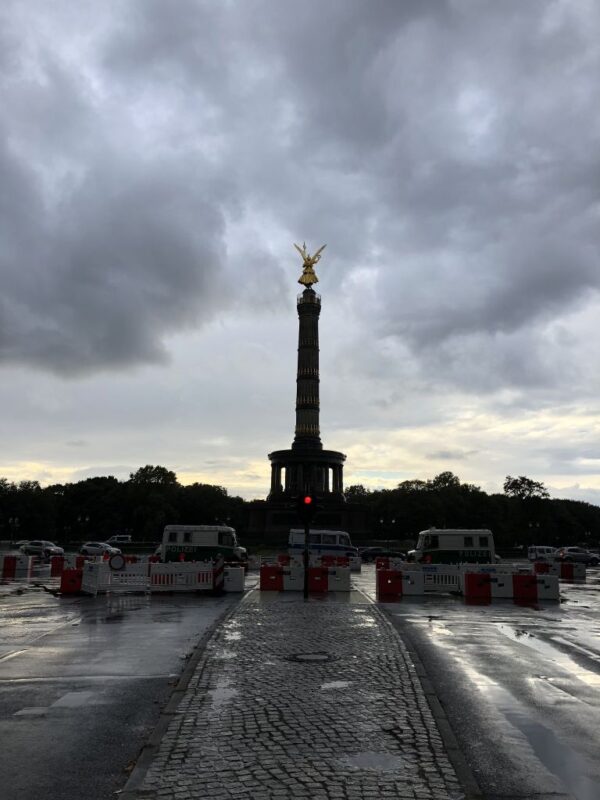
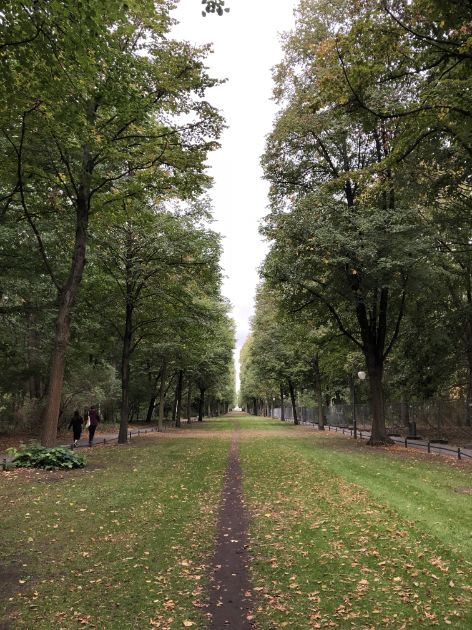
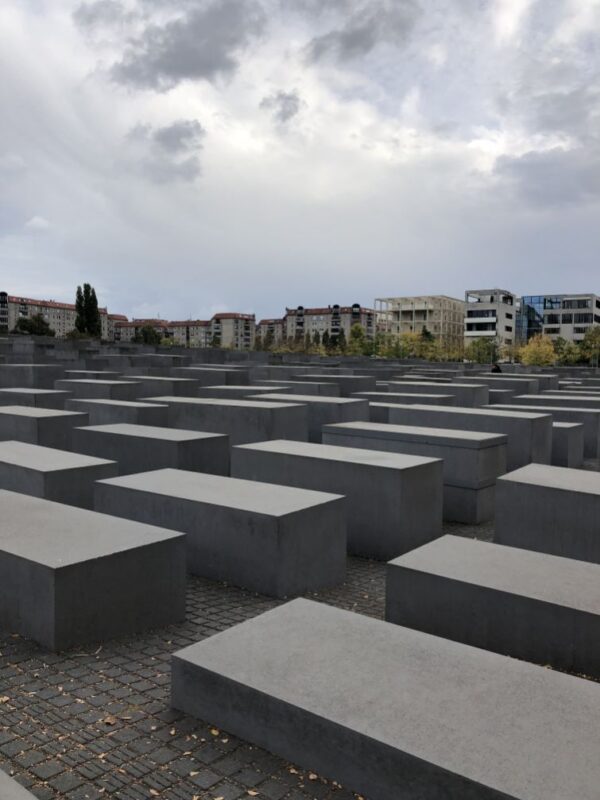
No. 9 Have a plan for rainy days, Berlin might have them in store
Germany’s weather is infamously moody, so much so that the locals simply say that there’s no such thing as bad weather, only bad clothing.
When you’re heading out for the day, it’s a good idea to pack some kind of rain protection like a coat or an umbrella, just in case the weather turns.
If you have a big walking tour planned and it suddenly decides to thunderstorm for the day, Berlin has plenty of undercover activities for you to enjoy instead.
Check out some of the free exhibitions I mentioned in point 4 or swing by the vintages stores over on Münzstraße and Weinmeisterstraße.
If you’re a big history fan, the world-class museums over on Museum Island might be calling your name, entry to individual museums will set you back 10€ per person.
Sadly, the Pergamon Museum is closed for the next couple of years for extensive renovations but the value ticket (19€) will get you entry into all the other museums on the island.
The PalaisPopulaire is a small art gallery with free entry and a simple café right on Unter den Linden if you’re looking for more things to do out of the rain. Or simply make like a Berliner and settle up in a bar for a drink or two until the weather passes.
Bonus tip: Learn some key German phrases
A tiny word of warning, the Berliners aren’t traditionally known for being super warm and welcoming but this is more of a “streetwise” approach where a lot of locals might not be overly friendly to someone that they perceive as a visitor.
But what will earn you some brownie points is making an effort to learn a few key phrases in German, this goes a lot further than expecting everyone to swap to English if it’s not their strong suit. After all, a little bit of respect goes a long way!
Even Germans from other cities can consider Berliners to be a bit brusque so don’t worry if you get very direct and to the point service, it’s just the way that things roll on in Berlin.
Some key phrases that will come in handy:
“Hallo” – hello (easy enough so far!)
“Tschüss” – bye
“Entschuldigung” – excuse me?
“Tut mir Leid” – I’m sorry
“Sprechen Sie Englisch?” – do you speak English?
“Ich kann kein Deutsch” – I can’t speak German
“Bitte” – please/you’re welcome
“Danke” or “Danke schõn” – thank you or thank you very much
Of course, this is far from a full language course but learning a few words to be polite is always a good idea. English is quite widely spoken in the capital, especially amongst young people, so don’t worry about needing to suddenly learn a new language if you’re thinking of travelling to Berlin.
In a pinch, you can always use a free translation app like Google Translate or Apple has a similar app on their phones to translate if you happen to come across a rare establishment where no one speaks English but this is pretty unlikely in Berlin. If you’re headed out into the countryside, then things might be a bit different.
You’ve reached the end of this guide of Berlin travel tips on a budget!
We’ve explored the eclectic streets of Friedrichshain and chomped on vegan doughnuts out in Prenzlauer Berg, possibly even with park karaoke as a backdrop.
From street art on the remnants of the Berlin Wall to the rooftop of the Reichstag building, we’ve enjoyed the top sights of Berlin for free and snapped plenty of photos.
I hope you’ve gained some tips on how to enjoy Germany’s big city capital without spending all of your pennies, as well as budget travel tips that will serve you beyond Berlin.
Let me know if you found any of them useful in the comments and I hope you have a marvellous trip to Berlin.
Need some old-school German sights after uber cool Berlin? Maulbronn Monastery is ready for you!

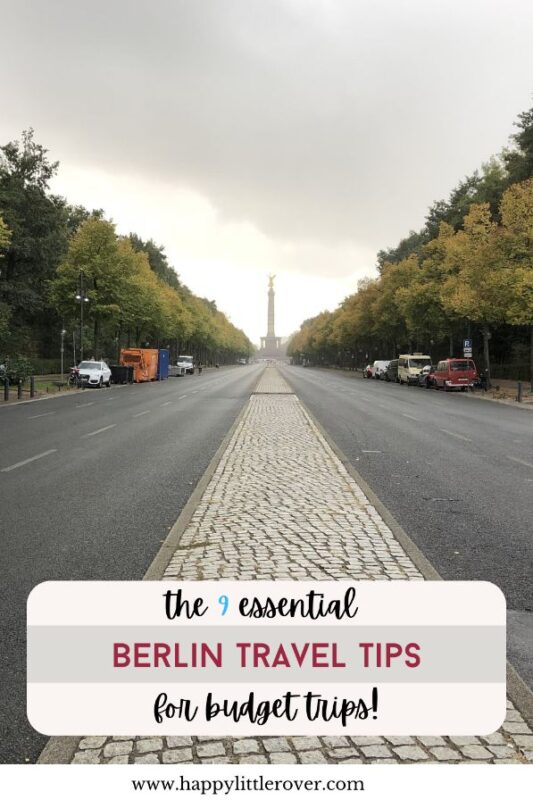
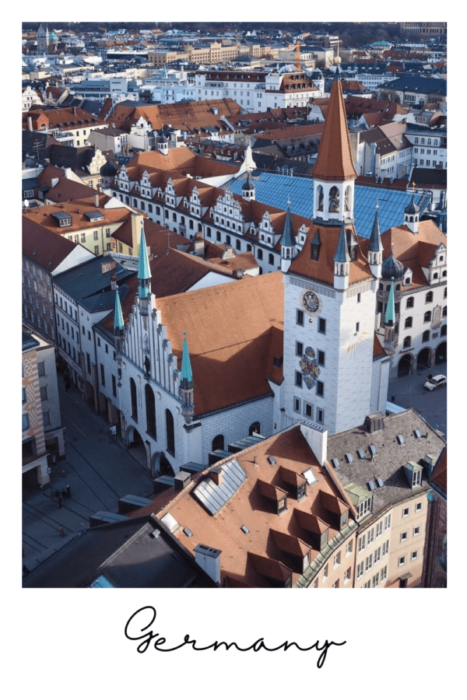

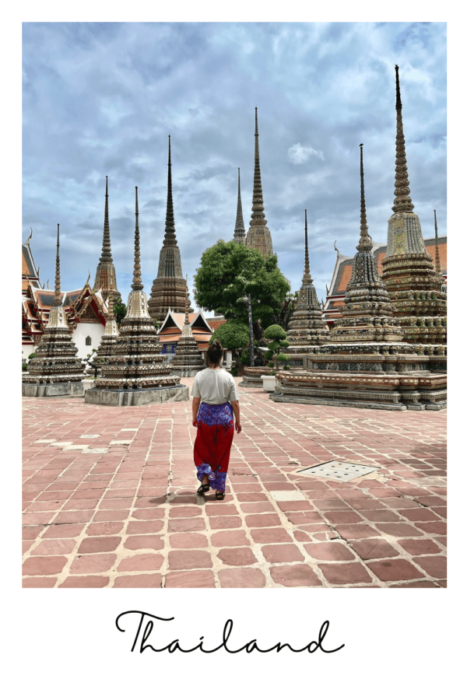



2 Comments
Join the discussion and tell us your opinion.
Such a thorough and interesting post. Lots of info on Berlin, sounds fantastic.
I am surprised that Berliners are not known for being friendly. We found them sooo warm and welcoming when we visited (I’ve only been once…)
These are such great tips! I would love to go back and try the food you mentioned (German Ramen is totally worth a try!!) and omg I love esims- that is such a great call. 😀